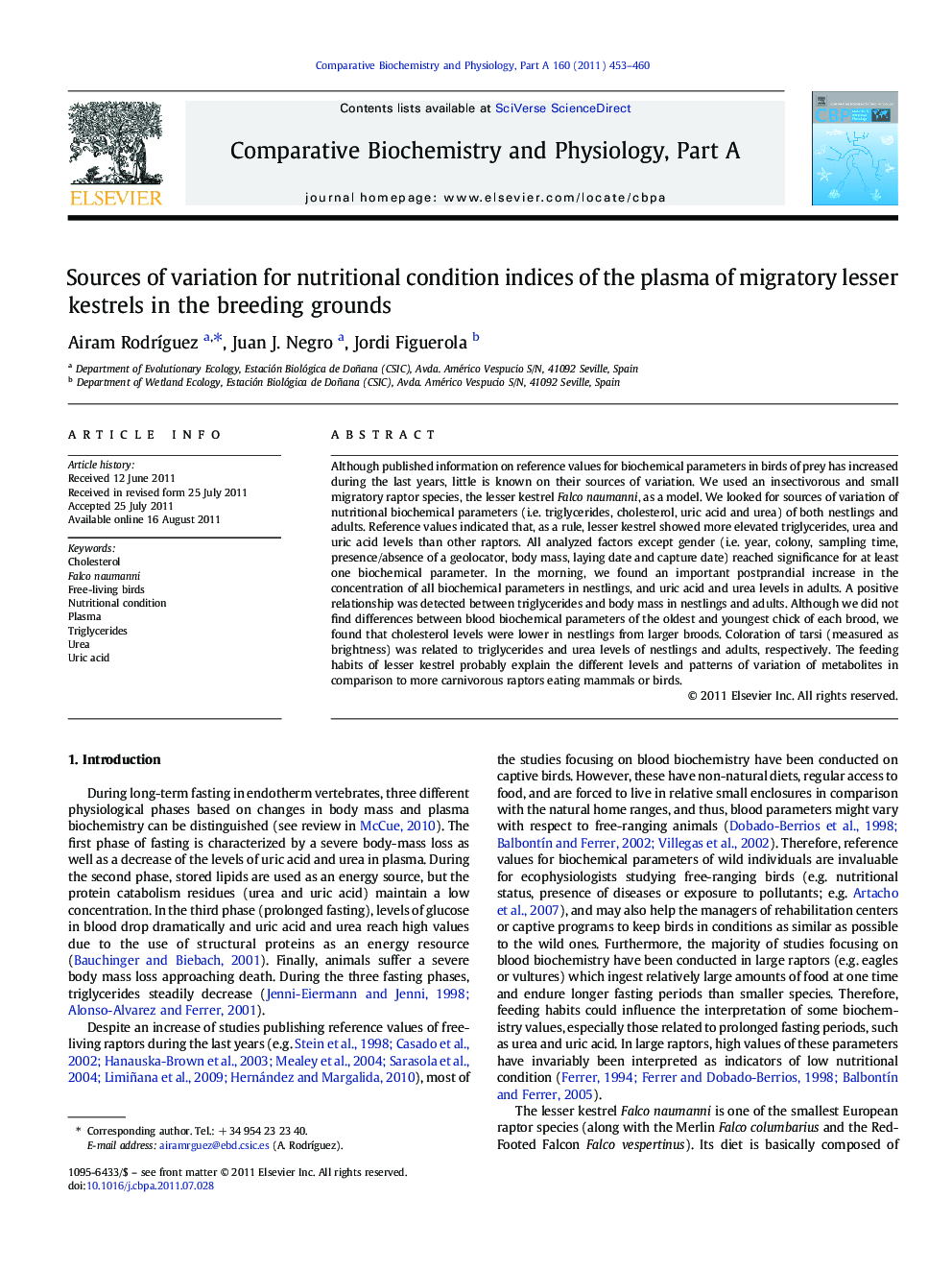| Article ID | Journal | Published Year | Pages | File Type |
|---|---|---|---|---|
| 8318727 | Comparative Biochemistry and Physiology Part A: Molecular & Integrative Physiology | 2011 | 8 Pages |
Abstract
Although published information on reference values for biochemical parameters in birds of prey has increased during the last years, little is known on their sources of variation. We used an insectivorous and small migratory raptor species, the lesser kestrel Falco naumanni, as a model. We looked for sources of variation of nutritional biochemical parameters (i.e. triglycerides, cholesterol, uric acid and urea) of both nestlings and adults. Reference values indicated that, as a rule, lesser kestrel showed more elevated triglycerides, urea and uric acid levels than other raptors. All analyzed factors except gender (i.e. year, colony, sampling time, presence/absence of a geolocator, body mass, laying date and capture date) reached significance for at least one biochemical parameter. In the morning, we found an important postprandial increase in the concentration of all biochemical parameters in nestlings, and uric acid and urea levels in adults. A positive relationship was detected between triglycerides and body mass in nestlings and adults. Although we did not find differences between blood biochemical parameters of the oldest and youngest chick of each brood, we found that cholesterol levels were lower in nestlings from larger broods. Coloration of tarsi (measured as brightness) was related to triglycerides and urea levels of nestlings and adults, respectively. The feeding habits of lesser kestrel probably explain the different levels and patterns of variation of metabolites in comparison to more carnivorous raptors eating mammals or birds.
Related Topics
Life Sciences
Biochemistry, Genetics and Molecular Biology
Biochemistry
Authors
Airam RodrÃguez, Juan J. Negro, Jordi Figuerola,
